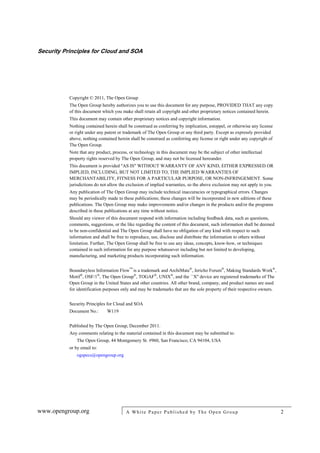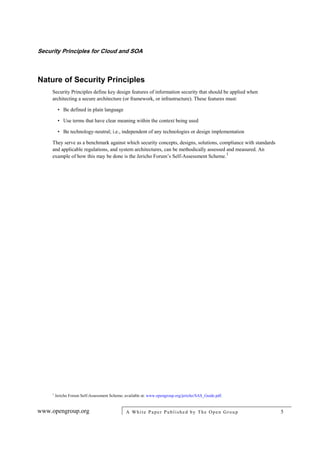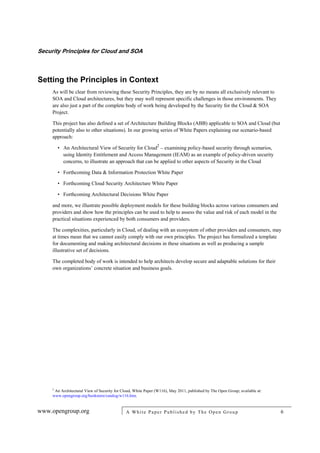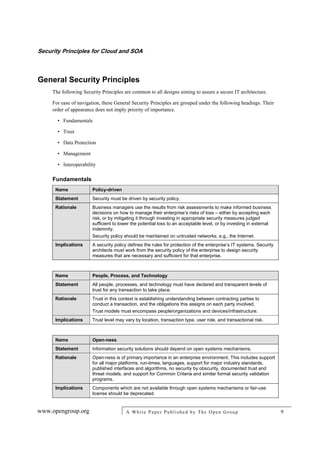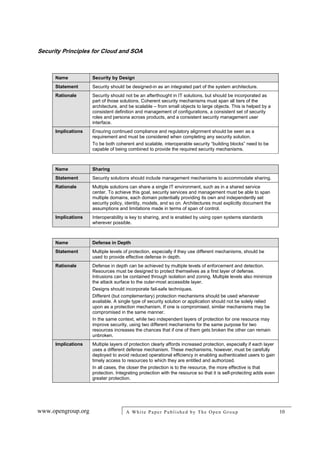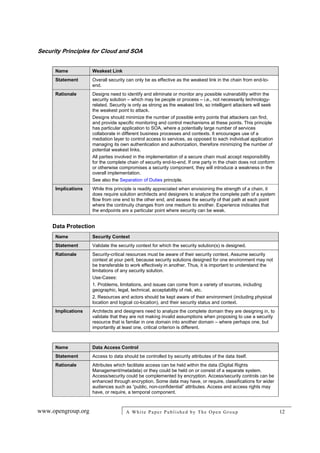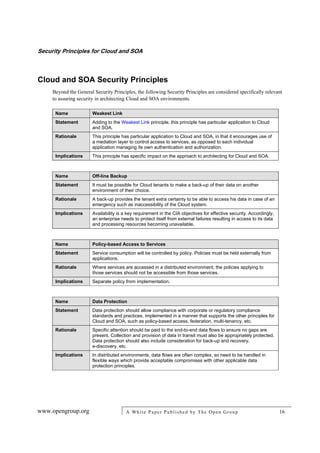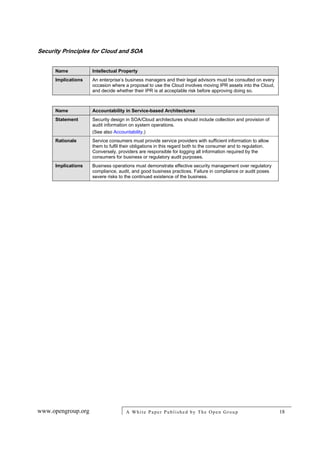This document presents security principles for cloud and service-oriented architecture (SOA) from The Open Group's Security for the Cloud & SOA Project. It provides general security principles that are widely applicable to securely designing enterprise architectures, as well as additional principles specifically relevant to securing cloud and SOA environments. The principles are intended to serve as a benchmark for assessing security concepts, designs, solutions, standards compliance, and system architectures.

